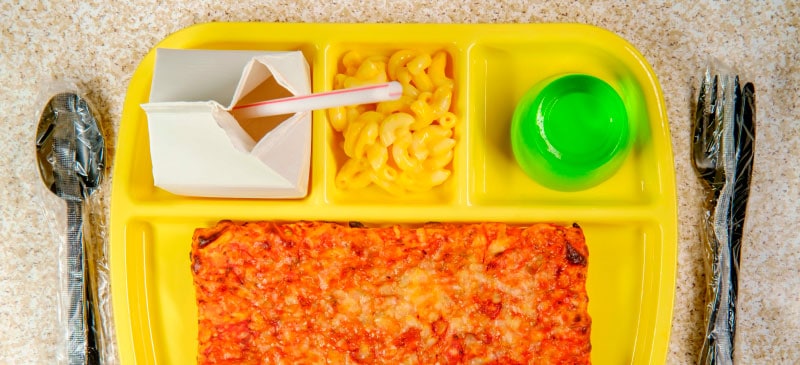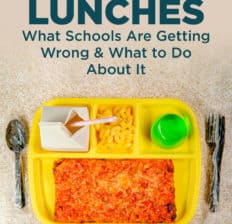This Dr. Axe content is medically reviewed or fact checked to ensure factually accurate information.
With strict editorial sourcing guidelines, we only link to academic research institutions, reputable media sites and, when research is available, medically peer-reviewed studies. Note that the numbers in parentheses (1, 2, etc.) are clickable links to these studies.
The information in our articles is NOT intended to replace a one-on-one relationship with a qualified health care professional and is not intended as medical advice.
This article is based on scientific evidence, written by experts and fact checked by our trained editorial staff. Note that the numbers in parentheses (1, 2, etc.) are clickable links to medically peer-reviewed studies.
Our team includes licensed nutritionists and dietitians, certified health education specialists, as well as certified strength and conditioning specialists, personal trainers and corrective exercise specialists. Our team aims to be not only thorough with its research, but also objective and unbiased.
The information in our articles is NOT intended to replace a one-on-one relationship with a qualified health care professional and is not intended as medical advice.
School Lunch: What Schools Are Getting Wrong and What to Do About It
September 12, 2022

People like to say, “You are what you eat.” We like to say, “You are what you break down and absorb.” When you pair this with the staggering statistic that at least 54 percent of children in the U.S. have been diagnosed with a chronic condition, according to a 2011 study published in Academic Pediatrics, you have to wonder what American children are eating, especially during school lunch periods … and it’s not always in parents’ hands.
If a child eats hot lunch at school every day, that child has approximately 180 meals out of the year at his or her educational institution. Do you know what’s in school lunches?
The Problem with School Lunch Options
It’s no secret there has been concern surrounding the meals served in schools. In fact, the Healthy, Hunger-Free Kids Act of 2010 implemented regulations to help better meal nutrition for kids. The act capped the number of calories per meal and required every meal to contain at least one serving of fruits and vegetables.
After these changes went through, researchers found increases in calcium, vitamin A, vitamin C, iron, fiber and protein in school lunches in three middle schools and three high schools in Washington State — with about equal participation in the school lunch program before and after the new regulations.
However, looking at calories, food groups and macronutrients doesn’t indicate the true healthfulness of these school lunches. Many food suppliers utilize processed foods as well as artificial flavors and coloring, preservatives, emulsifiers, and other food additives, which are currently allowed in cafeteria meals.
Meanwhile, more likely than not, meats and produce are conventionally raised and produced as well to keep costs down.
Studies show what children eat has a direct effect on schooling:
- A study showed that while eating fast food lowers students’ test scores, getting proper nutrition improves performance.
- Further research has found deficiencies in vitamins and minerals diminish cognitive abilities and mental concentration.
- A study published in Nature Reviews Neuroscience found diets with high levels of saturated fats may impair learning and memory.
- A 2011 study revealed that when one school switched from processed meals to healthier school lunches, educational outcomes improved, and absences fell by 14 percent.
- A correlation has also been drawn between nutrition and behavioral outcomes. According to Hilary Boynton, certified holistic health counselor and head of the kitchen at Manzanita School in Topanga, Calif., where the food workers serve healthy, whole food lunches every day to fourth to 12th graders, “Most kids don’t know what it feels like to feel good.”
From anecdotes to scientific studies, it’s clear what children eat matters for their cognitive functioning, behavioral success and performance in school. It’s time for a change when it comes to school lunch.
How to Improve Your School’s Lunches
In order to help uncover effective, feasible ways to help change school lunches nationwide, I sat down with Boynton, who’s been infamously dubbed “The Lunch Lady.”
Here’s what she had to say about how you can get involved and help transform the landscape of school lunches in the U.S.:
1. Find Out What’s in Your Child’s Lunches
You can only find out so much about what your child is eating from the weekly school lunch menu that gets sent home to you. “Turkey sandwich with peaches, green beans and a chocolate brownie” may give you some insight into the macronutrients your son or daughter is eating, but what about the quality of those items and any additives they may contain?
Schools are required to have a complete list of the school lunch ingredients available. Not sure where to find it? Try going to the school nurse and asking what’s in the school lunches to learn about preservatives, dyes, etc., that are likely lurking in the meals.
2. Join the Movement
Lunch Leader Academy: Boynton is on a mission to rethink lunch ladies. “You’re just a leader in the good food movement,” she says of the cafeteria staff.
If you want to make an impact for the health of the children in a school district near you or even implement a whole food lunch program in your home or business, you can attend a five-day intensive program based on ancestral and whole food meals through the Lunch Leader Academy in Topanga, Calif.
The Edible Schoolyard Project: The Edible Schoolyard Project aims to “provide a free sustainable school lunch for all students K–12, buy food directly from farmers and ranchers who take care of the land and their workers and teach students the values of nourishment, stewardship and community.” It offers programs to train educators and advocates to create edible education programs.
National Farm to School Network: “The National Farm to School Network is an information, advocacy and networking hub for communities working to bring local food sourcing and food and agriculture education into school systems and early care and education environments.”
Whole Kids Foundation: The Whole Kids Foundation educates teachers about nutrition to further inspire healthy kids and provides grants for school gardens, salad bars, educational beehives, farm-to-school programs and scratch-cooked school lunches.
3. Educate Lunch Leaders and School Administrators
At the end of the day, in order to make a change within a school, the first people you need to get on board are school administrators. Without approval from the administrative staff, you can’t make much traction.
Luckily, a plethora of research exists today to support whole foods and clean eating. You may not be able to spark radical changes at first, but even the smallest bit helps.
Boynton suggests asking officials to change over condiments to healthier alternatives first. Conventional ketchup often contains high fructose corn syrup. Mayonnaise is typically laden with processed vegetable oils.
Don’t ever think swapping these out is too small. Can’t convince them about the condiments? Give salt a try.
Swapping out table salt for sea salt or Himalayan salt can add extra nutrients into the kids’ diets.
4. Teach Kids about Whole Foods
Food can be an amazing educational opportunity for kids. Implementing a school garden for children can be an effective way to do this and help keep costs down.
Alternatively, you can make lunchtime interactive by teaching the kids various cooking techniques. Boynton offered up the fun suggestion of “making zoodles and seeing who has the longest zoodle.”
To make whole food education a part of the school’s daily routine, there are options such as the Wellness Wakeup Call, where wellness information is shared over the intercom along with the more traditional morning announcements.
A real example of what this may sound like is: “Good morning! This is your Wellness Wakeup Call. Try to find foods that don’t have ingredients like high fructose corn syrup, partially hydrogenated fats, artificial colors and artificial flavors. Enjoy your day, the healthy way!”
5. Involve Local Farmers
Providing reasonably priced food to the school children begins with a food source. Meeting directly with local farmers to share your mission can be a great way to strike wholesale deals, build partnerships and support the local community.
As Boynton is able to share from experience, many local farmers and organizations want to help and often have similar thoughts on the food system, so they are many times excited to work with you on providing healthy whole foods to the kids.
Apart from simply sourcing your ingredients from farmers, consider bringing them in to speak to the kids during lunchtime … and invite the whole family! Educating and influencing the entire family helps implement these same food principles more widely in the children’s lives, such as in the home.
6. When in Doubt, Brown Bag It
At the end of the day, if you’re not seeing the necessary changes in your school’s food system to feel comfortable having your children eat the meals there, you can always pack them lunch from home. Boynton’s advice for putting together a brown bag lunch for kids is to focus on proteins and fats that will keep them satiated.
Here are 13 healthy school lunch ideas to keep your kids happy and full throughout the school day:
- Shaved chicken sandwich on sourdough bread
- Tuna salad on a bed of greens
- Egg salad wrapped in a sprouted grain tortilla
- Ants on a log (celery with almond or cashew butter and raisins)
- Trail mix with mixed nuts and seeds
- Hummus or baba ganoush with carrot sticks, broccoli and cauliflower
- Bone broth-based soups and stews in a thermos
- Guacamole with bell pepper slices
- Gluten-free nut and seed crackers with goat’s cheese
- Raw zucchini noodles with beef marinara sauce
- Homemade applesauce
- Black bean brownies
- A slice of raw cheesecake for dessert
Final Thoughts
- Changing the meals within the school system is no easy feat, but try not to get discouraged.
- Hilary Boynton, certified holistic health counselor and head of the kitchen at Manzanita School in Topanga, Calif., recommends starting with small shifts and focusing on hope instead of fear.
- By educating yourself, reaching out to school administrators, involving local farmers and making food fun again for the children, you can begin to change lunchtime for school children and radically transform the youth’s perception of health and nutrition.



